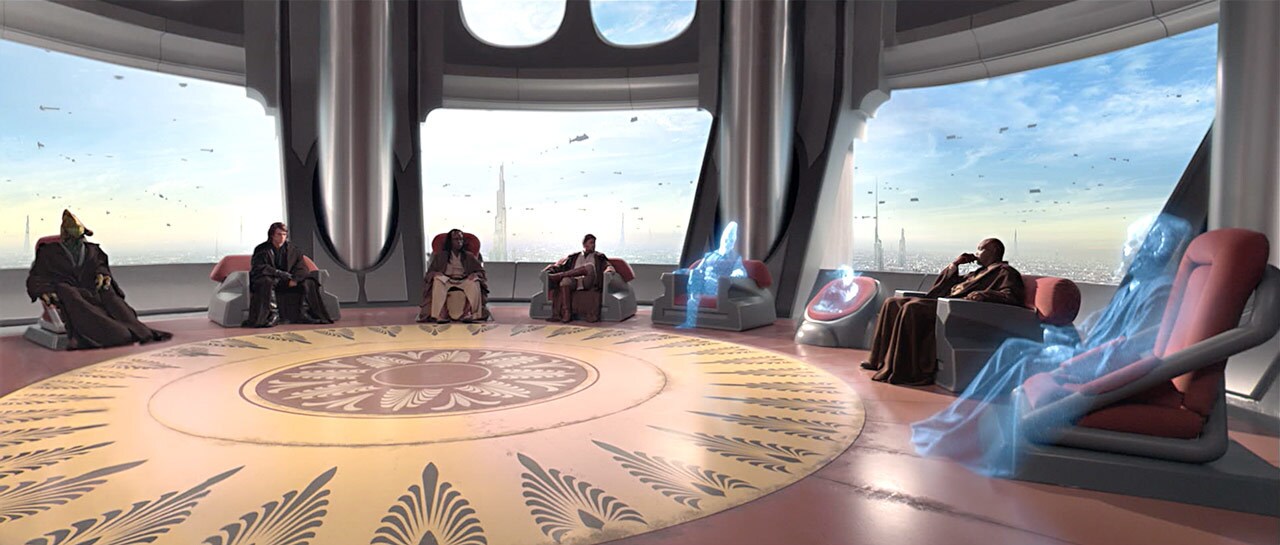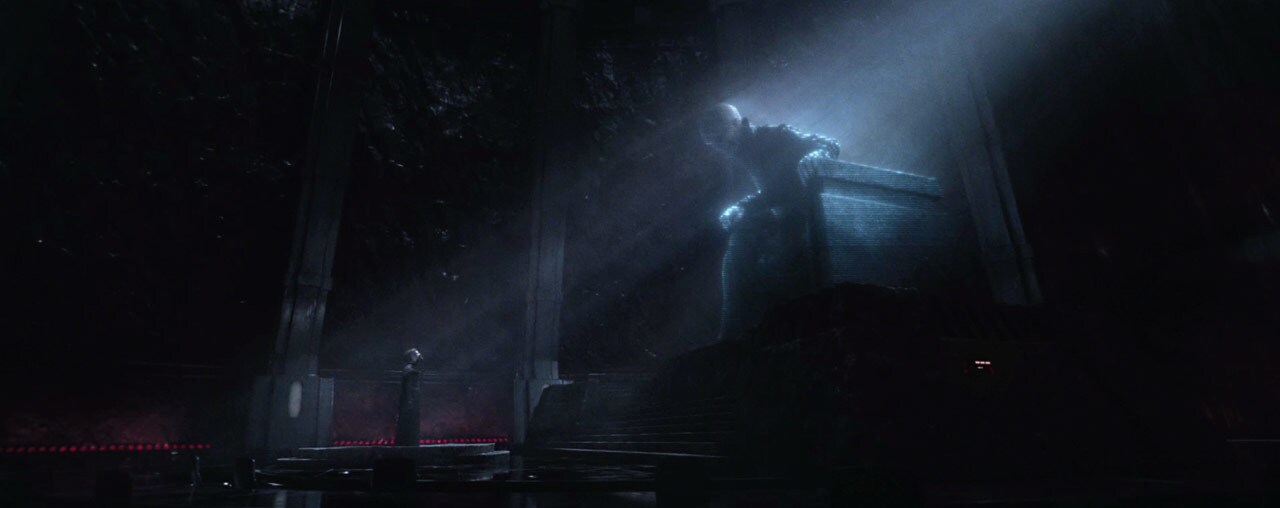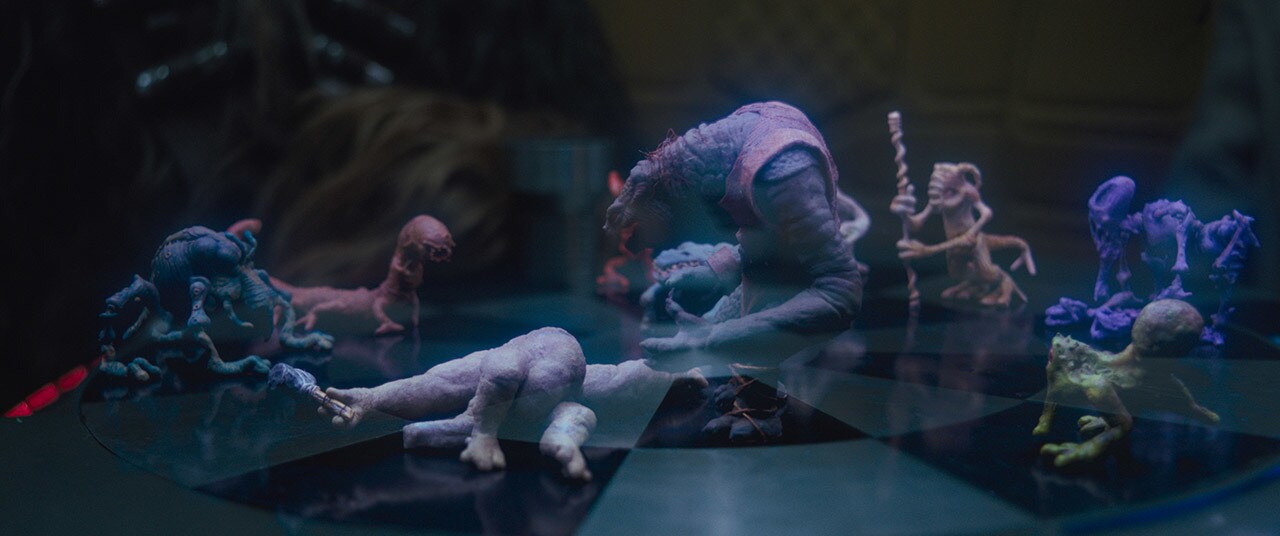In a galaxy far, far away, holograms -- 3D visual projections of a person, place, or thing -- have helped push storylines forward in ways both big and small, serving as both the call the action for a reluctant hero and the ominous harbingers of a new evil. These images help to visually connect Star Wars films made decades apart from each other, providing symmetry in storytelling, and helping to visibly explain plans that propel the story along.
Here are six ways holograms have been used narratively in Star Wars films throughout the years.
1. Secret messages and calls to action.
Holograms have repeatedly been used in Star Wars films to deliver a delayed, often secret, message. In many cases, these missives deliver an emotional punch for both the characters in the film and members of the audience, pulling all who view them into action.
Arguably the most memorable Star Wars hologram is the one that kicks off the hero’s journey for Luke Skywalker in Star Wars: A New Hope. As the film begins, Princess Leia makes a holographic message, entrusted to the ever loyal R2-D2, asking for Obi-Wan Kenobi’s help.
Luke accidentally plays the message, which effectively alters the course of his future from moisture farmer to Rebel X-wing pilot.
The original Leia hologram message takes on even more meaning when R2-D2 projects it to Luke on Ahch-To over 30 years later in Star Wars: The Last Jedi. R2-D2 replays the message in an attempt to prod Luke to leave the island and return to help Leia and the Resistance. The message doesn’t quite result in Luke leaving the planet, as it did in A New Hope, but it clearly impacts him emotionally. In the very next scene, Luke awakens Rey to tell her he will begin teaching her at dawn.
In Star Wars: Attack of the Clones, Anakin and Padmé help transmit Obi-Wan Kenobi’s hologram message about the Separatists to Yoda on Coruscant, giving the pair a reason to leave Tatooine (to assist Obi-Wan) and propelling the story to its climax on Geonosis where everyone is reunited on the same planet.
One of the most emotional scenes in any Star Wars film revolves around a hologram message in Rogue One: A Star Wars Story. After years of not seeing her father, Jyn Erso’s future changes after seeing a hologram of Galen Erso. Galen’s message gives Jyn and the Rebels information critical to destroying the Death Star and an emotional reunion with a man she's written off as a traitor. It’s hard to imagine a handwritten message, or even a spoken transmission, having as much impact on Jyn’s character.
The power and desire of ‘seeing to believe’ is strongly felt near the end of Star Wars: Revenge of the Sith. Obi-Wan Kenobi seeks out visual proof that Anakin Skywalker has turned to the dark side and he gets it when he views footage of Anakin murdering Jedi and kneeling before Darth Sidious.
2. Introducing new (and often menacing) characters.
Speaking of Palpatine's alter ego, several Star Wars villains make their on-screen debut via hologram. What better way to add a sense of mystery to a character than by revealing them to audiences as a ghostly projection whose location is unknown?
Emperor Palpatine first appeared in Star Wars: The Empire Strikes Back as a large and looming hologram of just his upper body. The first time audiences see Darth Maul on-screen in Star Wars: The Phantom Menace is when he, well, menacingly steps up to a table via hologram.
Maul’s first and only appearance in Solo: A Star Wars Story is again via a hologram message -- this time in a conversation with Qi’ra.
Supreme Leader Snoke's appearances in Star Wars: The Force Awakens were solely in the form of an enormous hologram looming over Kylo Ren and General Hux.
Even the Death Star makes its first chronological appearance in a Star Wars film via hologram near the end of Attack of the Clones.
3. Effective real-time visual communication.
The most common use of holograms in Star Wars films is as a form of real-time visual communication, which benefits both the characters on-screen (it’s always nice to look your underlings in the eyes when you’re thinking about Force choking them) as well as the audience.
Without holograms, characters might be talking to each other more via comlinks, but thanks to the visualization, we can see both sides of the conversation, which makes it much easier to follow and is more dynamic.
The first use of holograms during real-time communication in a Star Wars film was a conversation between Darth Vader and General Veers in Star Wars: The Empire Strikes Back, amid the Battle of Hoth.
Holograms were used extensively during the prequels in a similar fashion. There’s no excuse to miss a meeting in Star Wars, especially for those serving on the Jedi Council, when your hologram can easily fill your seat.
The use of holograms played an important role in Sheev Palpatine’s storyline in the prequels. With the use of holograms, Palpatine was able to simultaneously engage in secret conversations as Darth Sidious and keep up appearances at his day job in the Galactic Senate, all without ever leaving Coruscant.
There’s also no question in the audience’s mind who is ordering the clone troopers to kill the Jedi during Order 66.
But The Last Jedi broke new ground when Supreme Leader Snoke was able to physically drag General Hux across the floor during their conversation via hologram.
4. A way to represent maps and battle plans.
Another common use of holograms is as a visual representation of a map or interactive battle plans. In Star Wars: Return of the Jedi, Mon Mothma unveils intelligence regarding the second Death Star, delivered through great sacrifice by the Bothans. Holograms help visually explain to audiences how the rebels plan to destroy it and make their escape.
The Force Awakens used similar command center holograms to more closely examine the threat of Starkiller Base.
Holograms were also used in plotting smaller confrontations. In The Phantom Menace, Qui-Gon Jinn, Obi-Wan Kenobi, and Padmé Amidala use a hologram projection of Theed to plan their secret entry into the city. In Revenge of the Sith, Obi-Wan Kenobi and Anakin Skywalker similarly plan the rescue of Palpatine with the help of a hologram showing the layout of Dooku’s ship, projected by R2-D2.
Holograms have also been used as giant projectable maps in several Star Wars films, most notably as the map to Luke Skywalker in The Force Awakens.
5. An effective means of visual symmetry across the saga.
Star Wars filmmakers have been able to create some memorable moments of visual symmetry through holograms.































